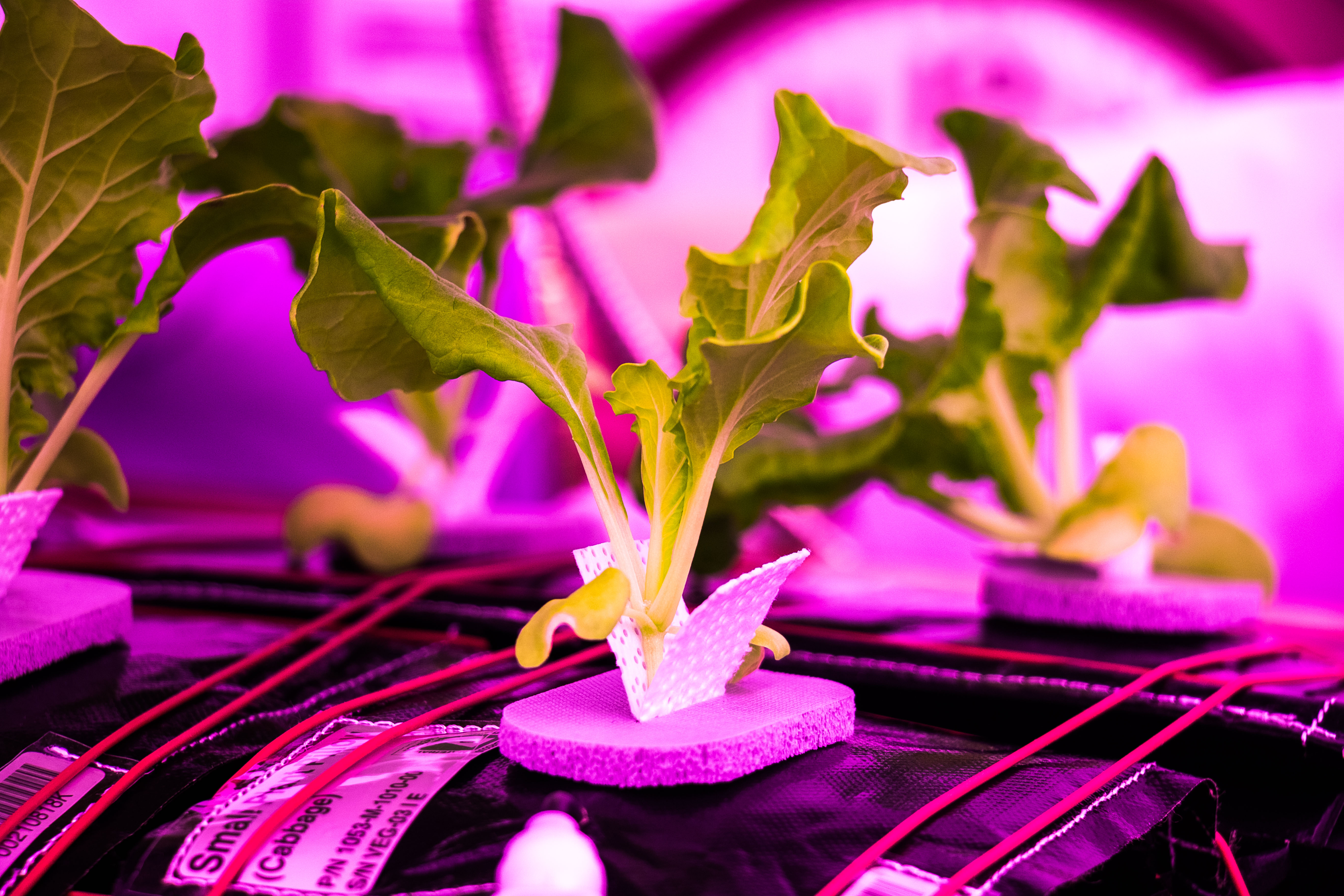Cape Canaveral, FL–Media personnel had the opportunity in the days leading up to SpaceX’s CRS-10 launch to the ISS, to tour NASA’s SSPF (Space Station Processing Facility).
Inside, several scientists are actively conducting research on growing food in microgravity. These scientists aim to use this research to better our understanding of how things grow in space and how we might grow crops someday when we send humans to live and work on the Moon or Mars.
hi-res: photos.tmahlmann.com
First, we got dressed in cleanroom suits/hair nets and journeyed into one of the many “Environmental Growth Chambers” that exactly replicate the ISS on a 72 hour delay.
Temperature, humidity, pressure, all the characteristics that would need replicating here on the ground minus gravity are kept constant.
hi-res: photos.tmahlmann.com
All characteristics, so that the scientists can compare the plants on the ISS to those that grow here on the ground similarly to how fmr. NASA Year in Space astronaut Scott Kelly and Mark Kelly worked collaboratively to compare the effects of living in space.
Even down to the plaques that sit above the growing plant life, seen here exactly how it stands on the orbital outpost:
hi-res: photos.tmahlmann.com
It was incredible to be able to have this opportunity to see first-hand, the research that is being performed both here on the ground and thanks to the SpaceX Dragon, Orbital ATK Cygnus, and other resupply spacecraft that bring these experiments there, up in space.
hi-res: photos.tmahlmann.com
hi-res: photos.tmahlmann.com
A red bell pepper being grown in one of the environmental growth chambers at KSC’s SSPF.
hi-res: photos.tmahlmann.com
hi-res: photos.tmahlmann.com
Plants:
hi-res: photos.tmahlmann.com
More plants: (lettuce)
hi-res: photos.tmahlmann.com
And more plants:
hi-res: photos.tmahlmann.com
This is what is called the Advanced Plant Habitat:
hi-res: photos.tmahlmann.com
It is a high-fidelity test version of the actual APH that will fly to Station this year.
It uses red, green, and blue LED lights, similar to the Veggie experiment I showed you above.
APH also has the capability to use white LEDs and infrared light to test. It has 180 sensors and can put out about 4x as much light as the Veggie experiment, equating to about half as much light as you get on a clear sunny day.
Lots of exciting stuff happening with space bound bioscience research.
APH, the largest plant habitat ever built for NASA, will be delivered to the Space Station this year.
Have an idea/suggestion for a photo? Drop me a line! I’d love to hear it.
I am always exploring new ideas… Follow me on social media for more of these throughout the month!
If you’d like to support me and get a behind the scenes look at my photography, you do so here on Patreon. Thanks!
See you tomorrow for another photo story, just like this one.
Leave your email below to keep up-to-date with the latest in spaceflight! (A few emails a month, max.)













